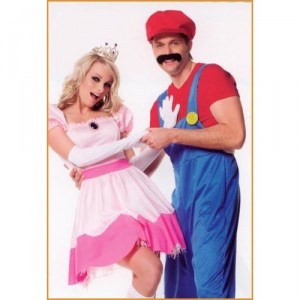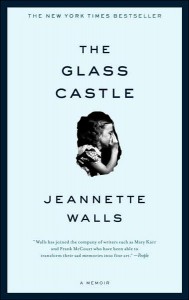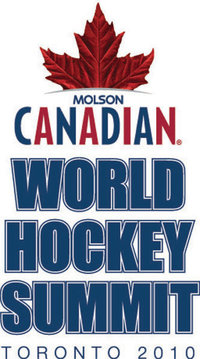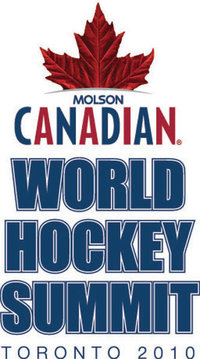Happy anniversary, Johnchidleyhill.com!
Last Tuesday was the one-year anniversary of this blog's creation. For the past year this website has been a place to work on my writing, talk about things that interest me and show off my various professional projects.
I’ve been really pleased with this site and with how my career has developed over the past year. In particular, I’ve been touched by all the positive feedback I’ve received from people. I’m always surprised with how often friends or family mention that they love my writing here. It’s nice to see my hard work appreciated like that.
To me, the most incredible thing about this blog is all the people who’ve read my posts that I don’t know personally. According to my metrics, I’ve had 16,688 unique visits and counting. When I started this site a year ago I never thought I’d have that many visitors.
Thank you for all your support.
To celebrate this blog’s anniversary I thought I’d list the top five most popular articles on this website.
But before I do, I want to mention two in particular: "Bill Simmons’ Twitter idea might be a game-changer" and "Sandwich Review: KFC’s Double Down". These two posts are the two biggest spikes in readership I’ve had over the course of the year. In both cases my readership doubled or even tripled the day they were posted.
Here are the top five most read articles of JCH.com over the past 365 days, in ascending order:
5. "Bill Simmons’ Twitter idea might be a game-changer" – May 14th, 2010
As mentioned above, this article was one of the first big spikes in traffic this blog saw. Collecting a total of 202 unique page views since it was first published, this was my first serious stab at discussing the evolving role of media in sports.
“An interesting experiment occurred on Thursday night as the Boston Celtics eliminated the Cleveland Cavaliers from the National Basketball Association’s Eastern Conference semifinal with a 94-85 victory.
As league MVP LeBron James stepped up to the free throw line in the second half the Boston crowd began to chant “New-York-Knicks! New-York-Knicks!”, referring to one of the more moribund destinations that the soon-to-be free agent might head to in the offseason.
Later, the Celtic faithful began to chant “MSG! MSG!”, the acronym for Madison Square Gardens, the home of the Knicks.
This was all part of a grand scheme concocted by ESPN.com’s Bill Simmons, Boston’s most famous sports fan, and it may just revolutionize spectatordom.”
4. "Sandwich Review: KFC’s Double Down" – Oct. 19th 2010
I’ve reviewed a lot of things on this blog: comics, books, the occasional movie and even some baseball stadiums. But my look at the controversial Double Down sandwich at KFC was the first and last crack at being a foodie you’ll ever seen in this space. That review was particularly timely, earning some buzz and a spike in readership, eventually tallying 214 reads.
“It took months to make it possible, but yesterday I finally ate a Double Down from KFC.
Normally, reviewing a sandwich is not my bag. After all, my good friend and neighbour John already does a bang-up job over at In Search of a Sandwich. Why would I want to compete?
But the Double Down - KFC’s bacon, sauce and cheese sandwich that substitutes the bread for pieces of deep-fried chicken - transcends a normal sandwich. Just as the Double Down pushes the envelope of sandwich technology, I must expand my blogging horizons for this fast food delicacy.”
 3. "Three ice dancing performances I’d like to see" – Feb. 23rd 2010
3. "Three ice dancing performances I’d like to see" – Feb. 23rd 2010
I blogged throughout the Vancouver Olympics, usually in response to a significant event at the games. By far, the most popular of these pieces was my suggestion for three ice dancing routines that would set the performers apart from the cliché-laden pack.
When I posted this link on Twitter it was quickly picked up and retweeted by many of my friends, making it as close to viral as this site has ever been. That buzz resulted in a total of 313 views to date.
Oddly, and somewhat creepily, “Princess Peach” is by far the most popular search on this website, all thanks to this article.
“Like many Canadians, I was thrilled by Tessa Virtue and Scott Moir’s gold medal ice dance performance on Monday night.
I would never call myself a figure skating or ice dancing fan – I find that too often the judge’s decisions are political – but I was impressed with the athleticism and technique of all the dancers in the competition.
What did not impress me was their lack of creativity or originality. Most of the performances bled together. Virtue and Moir stood above the rest of the competition because they didn’t rely on clichéd music like the themes from the Phantom of the Opera or Requiem for a Dream. They weren’t covered with sequins and feathers. Their performance truly distinguished them from the rest of the pack.”
2. "Toronto has two strikes against it for most professional athletes" – Mar. 9th 2010
I wrote this piece between Roy Halladay’s departure to the Philadelphia Phillies and the National Basketball Association’s free agency period that saw Chris Bosh take his talents to South Beach.
It’s a topic I’d like to revisit sometime, especially since one of my commenters pointed out that my math on the differences in taxes between the United States and Canada might be wrong. Despite the possible error, this post has been read 417 times.
“This summer could be particularly heart-breaking for fans of the Toronto Raptors as they face the prospect of forward Chris Bosh, arguably the best player the team has ever seen, leaving the city as a free agent.
Toronto Blue Jays fans can sympathize with their basketball neighbours – this summer they lost ace Roy Halladay in a lopsided trade with the Philadelphia Phillies and Seattle Mariners.
It’s a familiar story for Torontonians. One of their teams will draft a player who becomes a star, but the franchise player eventually begins to grumble and complain about greener pastures, eventually demanding a trade or letting their contract expire and moving on via free agency.”
1. "Book Review: The Glass Castle by Jeannette Wells" – Sept. 15th 2010
 I try to review every book that I read, even if it doesn’t have anything to do with the general themes of this blog like sports and pop culture. But the incredible success of my review of the Glass Castle shows that maybe, just maybe, I should review literally every single thing I experience. Not just books, but music, food, furniture, public transportation, whatever. Although it is the second-most recent post on this list, it’s garnered far and away the most views at 1,106 and counting.
I try to review every book that I read, even if it doesn’t have anything to do with the general themes of this blog like sports and pop culture. But the incredible success of my review of the Glass Castle shows that maybe, just maybe, I should review literally every single thing I experience. Not just books, but music, food, furniture, public transportation, whatever. Although it is the second-most recent post on this list, it’s garnered far and away the most views at 1,106 and counting.
“I never thought that I’d enjoy Jeannette Walls’ "the Glass Castle", but I was wrong.
On the surface, it looked like it was more for stay-at-home moms. It was one of Heather’s Picks at Chapters-Indigo Bookstores and reeked of Oprah’s Book Club. But once I started reading it I appreciated Walls’ writing and was moved by her story.
Like Frank McCourt’s ultra-popular Angela’s Ashes, the Glass Castle is a dark memoir about a dysfunctional family crippled by the father’s alcoholism and the mother’s loose grip on reality.”
World Hockey Summit – Day 4
 The fourth and final day of the 2010 World Hockey Summit focused on moving hockey forward and continuing to spread the good word about Canada’s favourite sport.
The fourth and final day of the 2010 World Hockey Summit focused on moving hockey forward and continuing to spread the good word about Canada’s favourite sport.
After an early breakfast the conference met in the Toronto Sheraton’s downstairs hall to listen to players, coaches and organizers speak about the movement to promote women’s hockey.
Like the previous day’s sessions on the Olympics and a World Hockey Agenda, all the members of the panel acknowledged that the 2010 Vancouver Games had done wonders for their sports’ public profile.
However, unlike Wednesday’s slanging match, keynote speaker Hayley Wickenheiser and the panel of Mel Davidson, Mark Johnson, Arto Sieppi, Angela Ruggiero and Peter Elander all agreed that women’s hockey had to return to the Olympics as well as stage more international and even professional matches.
Ruggiero made an important point about high calibre women’s play: as a member of Team USA she plays, on average, ten games per year. That’s it.
Once a player graduates from the NCAA, there is no viable professional women’s league. An individual looking to improve their game beyond the confines of a varsity program has to arrange her own ice time and practicemates, a surprisingly difficult task.
This lead to a lengthy discussion amongst the panel, and later amongst the break-out groups, about how to go about creating a professional women’s league that would allow elite female players to hone their skill and provide aspiring hockey players with ready-made heroes.
Promoting hockey to women dovetailed perfectly with the afternoon’s session on Growing Participation in hockey.
Tommy Boustedt of Sweden, Sieppi (again) of Finland, Scott Smith of Hockey Canada and Pat Kelleher of USA Hockey all discussed the particular challenges of promoting hockey in their respective countries.
Both Sweden and Finland focus on education of coaches, players and parents through intensive hockey schools open to all amateur players, while USA Hockey is concerned with branching out past the Three Ms: Michigan, Massachusetts and Minnesota.
Canada, of course, doesn’t have to worry about popularizing the game or breaking into new markets. Instead, their focus is on developing accessibility for low-income families and New Canadians as well as promoting women’s and sledge hockey.
Dr. Paul Dennis of the Canadian Hockey League, Cyril Leeder of the Ottawa Senators and John McDonough of the Chicago Blackhawks also contributed by addressing how their organizations interact with local communities to promote hockey and win over new fans to the game.
Although it was the least exciting of the presentations, that final session served as a fitting end to four days of hockey talk. It put a positive spin on the Summit and insured that the hundreds of delegates would be energized to go out and continue their hard work.
World Hockey Summit: Day 2
 After nine hours of panels, group work, questions and answer periods as well as informal discussions over food, one thing is clear at the 2010 World Hockey Summit: the amateur hockey system has to change.
After nine hours of panels, group work, questions and answer periods as well as informal discussions over food, one thing is clear at the 2010 World Hockey Summit: the amateur hockey system has to change.
Whether it was cautions from Dr. Steve Norris or Dr. Mark Aubry on the overly demanding training in youth hockey during the morning’s Player Skills Development session or the dire warnings of Czech National Program Director Slavomir Lerner of the talent drain from Europe to North America, it was plain as day that things need to change.
Although it’s difficult to sum up nearly six hours of presentations, the general consensus was that minor hockey associations are too focused on turning young players into National Hockey League superstars, sapping the game of its fun and making it excessively dangerous.
As panellist Brendan Shanahan said “How come I don’t hear about kids playing shinny anymore?”
The speakers spoke of multiple concussions to eight and ten year-olds, massive dropout rates in children’s hockey (44% of American hockey players have stopped playing by the age of nine) and a dwindling European junior system robbed of its best talent by the superior Canadian Hockey League.
During question and answer periods as well as in break-out discussion groups the delegates and officials in attendance at the WHS brainstormed ideas that could make amateur hockey fun again for the casual player, while creating a more practical Long Term Athlete Development plan for adolescents and teenagers who want to become professionals.
The idea that was most popular – garnering a round of applause from the Air Canada Centre’s floor when it was suggested – was raising draft eligibility from 18 to 19.
Many groups of delegates had come up with similar concepts including raising the draft age to 20 or forcing players to stay in midget for a minimum of two years and junior for three. A freeze on all international movement at the junior level was also a common theme.
One radical suggestion was to raise draft eligibility to 19, but allow NHL teams to take 18-year-old players at the cost of two draft picks. So a Sidney Crosby-type player would have cost the Pittsburgh Penguins their first and second-round draft picks.
It was an informative and exciting day of hockey talks, and I’d strongly recommend that you follow the above links to see video of the panel discussions. Also, if you want up-to-date quotes from the day’s events follow me on Twitter.
Today’s discussions will start with an evaluation of hockey’s role at the 2010 Vancouver Olympics, then a Q and A with NHL commissioner Gary Bettman and then finish off with an afternoon session on Establishing a Long-Term Global Event Agenda.